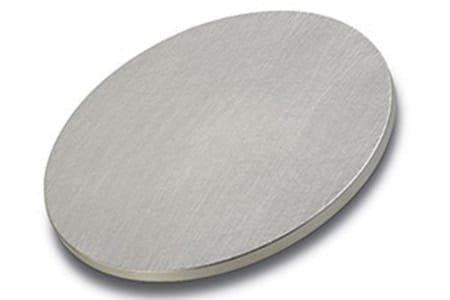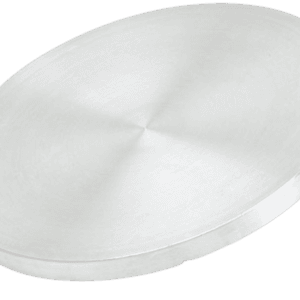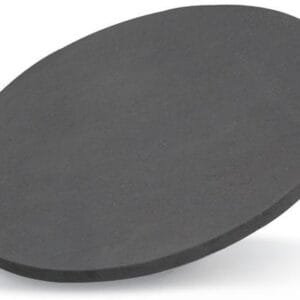Nickel Aluminum Sputtering Targets
Nickel Aluminum (NiAl) sputtering targets are specialized materials known for their excellent electrical and thermal conductivity, making them highly suitable for various thin-film deposition applications. These targets are primarily used in the production of high-performance films for semiconductors, electronics, and optical coatings. Nickel Aluminum sputtering targets are commonly employed in advanced technologies where stable performance and high purity are essential.
Specifications
-
Purity: 99.9%
-
Circular Targets: Diameter ≤ 14 inches, Thickness ≥ 1mm
-
Block Targets: Length ≤ 32 inches, Width ≤ 12 inches, Thickness ≥ 1mm
Key Features and Advantages
-
High Purity: TFM offers Nickel Aluminum sputtering targets with 99.9% purity, ensuring consistent film quality and reliable performance in advanced applications.
-
Excellent Electrical Conductivity: Nickel Aluminum thin films exhibit outstanding electrical conductivity, making them ideal for use in electronic and semiconductor devices.
-
Thermal Stability: These targets possess excellent thermal properties, maintaining stability and performance even under high-temperature conditions, which is crucial for electronics manufacturing.
-
Durability and Strength: Nickel Aluminum thin films are known for their high mechanical strength, ensuring that they withstand harsh environments and maintain high-performance standards.
-
Custom Sizes: Custom target sizes are available to meet the specific needs of industrial and research applications.
-
Vacuum Compatibility: Designed for compatibility with vacuum deposition techniques, these targets are ideal for high-precision thin-film sputtering processes.
Applications
-
Semiconductor Devices: Nickel Aluminum sputtering targets are extensively used in the production of thin films for semiconductors, especially in devices where high conductivity and thermal stability are critical.
-
Optical Coatings: These targets are widely used in optical coating applications for devices like mirrors, lenses, and filters, where reflective or protective coatings are needed.
-
Electronics: Nickel Aluminum sputtering targets are used in various electronic components, including capacitors, resistors, and interconnects, to enhance the electrical properties of devices.
-
Magnetic Films: Nickel Aluminum thin films are also utilized in the production of magnetic films for sensors, memory storage, and other magnetic applications.
-
Barrier Layers: Nickel Aluminum sputtering targets are often employed in barrier layers for microelectronic devices to prevent the diffusion of unwanted elements into sensitive components.
-
Thermal Coatings: Due to their thermal stability, Nickel Aluminum films are used in thermal management applications, including heat shields and thermal interface materials in high-power devices.
Manufacturing Process
-
Cold Pressed and Sintered: TFM’s Nickel Aluminum sputtering targets are produced using cold pressing and sintering techniques, ensuring uniformity and high density for efficient sputtering.
-
Elastomer Bonding: To increase mechanical integrity during sputtering, the targets are elastomer bonded to a backing plate, improving the overall durability.
-
Cleaning and Packaging: The targets are thoroughly cleaned to remove any contaminants, ensuring they are ready for high-quality thin film deposition. They are carefully packaged to protect them from environmental damage during shipping and storage.
Available Options
-
99.9% Purity: TFM offers Nickel Aluminum sputtering targets with 99.9% purity, providing the reliability needed for sensitive thin-film applications.
-
Custom Sizes: Customizable target sizes are available to cater to specific industrial or research requirements.
-
R&D Applications: Smaller-sized targets are available for research and development (R&D) purposes, allowing experimentation and innovation in thin-film technologies.
-
Sputtering Target Bonding Service: TFM also provides sputtering target bonding services for enhanced performance in various thin film deposition systems.
Conclusion
TFM’s Nickel Aluminum Sputtering Targets offer high purity, excellent conductivity, and thermal stability, making them ideal for use in semiconductors, electronics, optical coatings, and magnetic films. With 99.9% purity and customizable sizes, these targets are perfect for both industrial and research applications. Whether for high-performance thin-film sputtering or for advanced coating technologies, TFM’s Nickel Aluminum sputtering targets provide consistent and reliable results, ensuring superior performance in demanding environments.


 MSDS File
MSDS File



Reviews
There are no reviews yet.